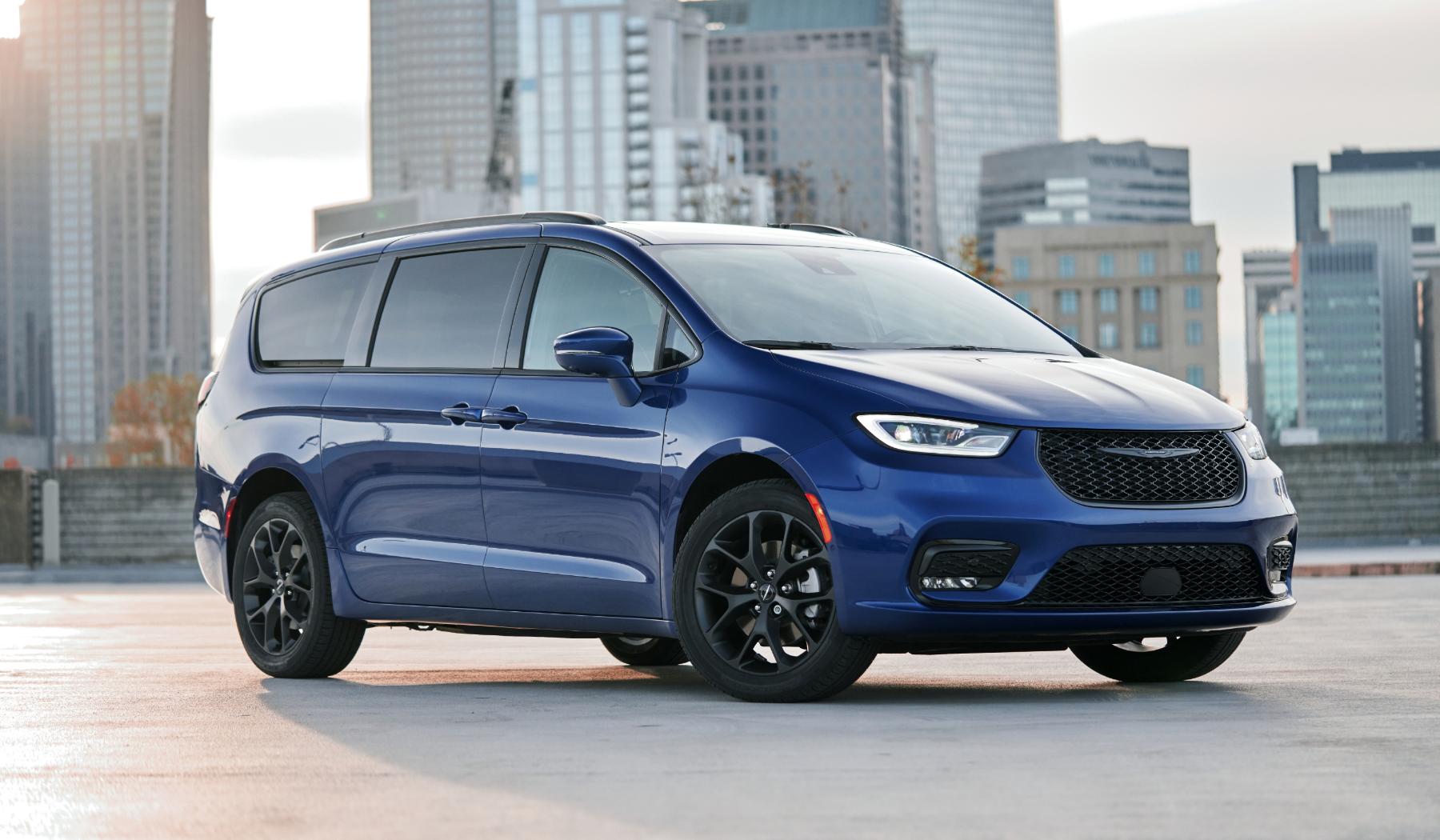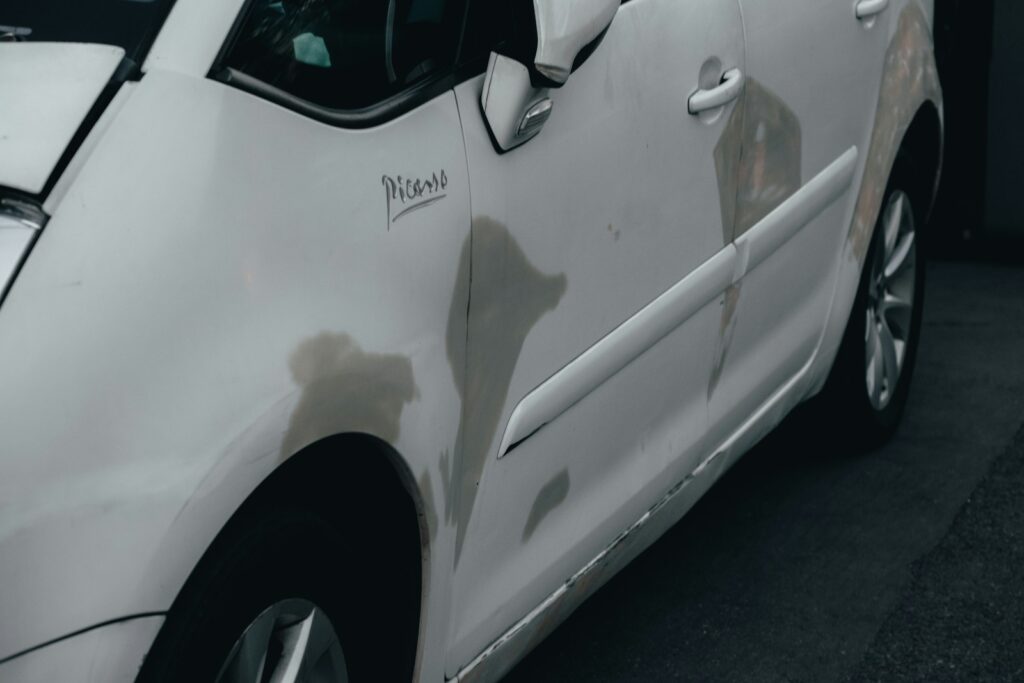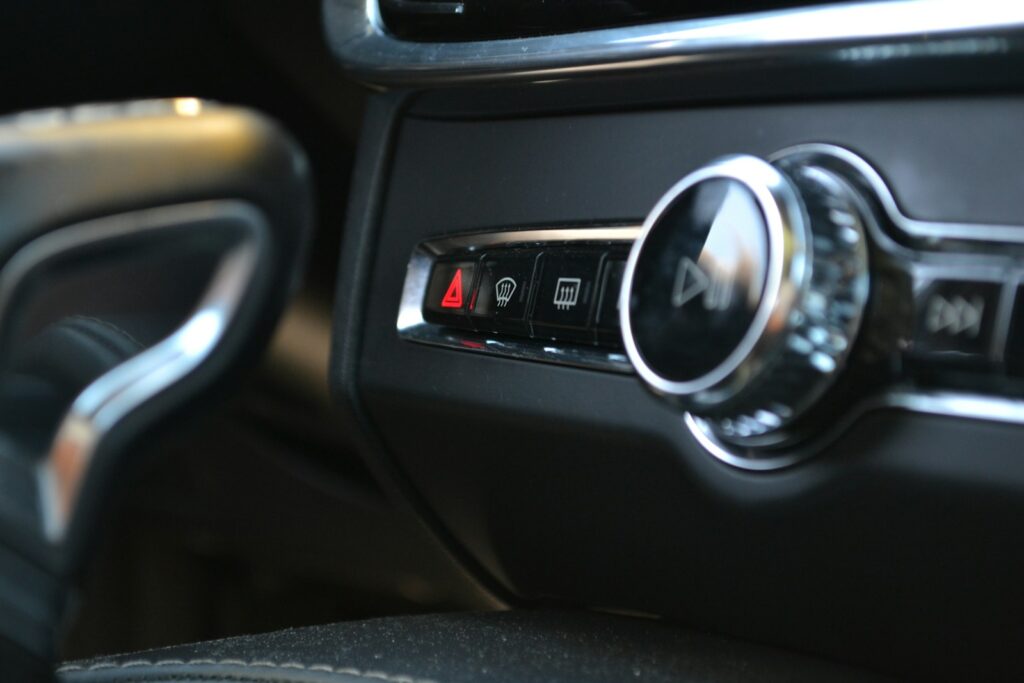
For many families, a minivan represents the ultimate blend of practicality, space, and affordability, often serving as a trusted workhorse for daily commutes and long road trips. However, beneath this veneer of reliability, a critical vulnerability lurks for several popular models once they cross the significant threshold of 120,000 miles: the transmission. This vital component, responsible for smooth gear changes and efficient power delivery, can transform from a dependable ally into a source of costly repairs and potential safety risks. Understanding these potential threats is paramount for current owners and prospective buyers alike.
Indeed, the notion that transmissions are high on the list of common minivan problems, regardless of the brand, is a sentiment echoed across consumer reports and owner feedback. What might seem like minor quirks – a hesitation here, a strange sound there – can quickly escalate into serious issues, compromising your vehicle’s performance, safety, and your financial peace of mind. The stakes are particularly high for minivans approaching or exceeding the 120,000-mile mark, as wear and tear on complex mechanical and electronic systems begin to manifest.
This in-depth guide is designed to arm you with objective, data-driven information, focusing specifically on the common transmission issues reported in Chrysler and Dodge minivans. We will dissect the most frequently reported symptoms, explore their underlying causes, detail the severe consequences of neglect, and review essential statistical data and recall campaigns. By understanding these potential pitfalls, you can take proactive steps to maintain your vehicle, make informed purchasing decisions, and potentially save yourself from significant headaches and expenses down the road.

1. **Slipping Gears: A Critical Red Flag for Minivan Transmissions**One of the most immediate and alarming indicators of transmission trouble in your minivan is the phenomenon of slipping gears. This occurs when your vehicle’s engine revs without a corresponding increase in speed, creating a disorienting sensation where it feels as though your minivan has suddenly shifted into neutral when it should be firmly engaged in a specific gear. This can manifest during various driving conditions, from accelerating away from a stoplight to maintaining a steady pace on the highway.
Owners of Chrysler minivans frequently report this symptom, noting the engine revving without a corresponding increase in speed, signaling that something is amiss internally. Similarly, Dodge minivan owners experience unexpected changes in RPMs without the expected acceleration. This is a clear and undeniable indication that the transmission’s internal components, such as clutches or bands, are failing to engage properly or maintain their grip, leading to a loss of power transfer from the engine to the wheels.
The implications of slipping gears extend beyond mere inconvenience. In critical driving situations, such as merging onto a busy highway or attempting to pass another vehicle, a sudden loss of power can create dangerous circumstances, putting you and your passengers at significant risk. Therefore, if you detect even the slightest sensation of your minivan slipping out of gear, it should be treated as a major issue demanding immediate attention from a qualified mechanic. Ignoring this symptom is akin to playing with fire, as it foreshadows more severe and costly problems.

2. **Delayed Engagement: When Your Minivan Hesitates to Move**Another common and equally concerning symptom of a struggling minivan transmission is delayed engagement. This issue is particularly noticeable when transitioning your vehicle from a stationary position, such as shifting from park (P) to drive (D) or reverse (R). Instead of a seamless and prompt engagement, you might experience a noticeable lag or hesitation before the gears finally connect, often accompanied by an unsettling hard thud or clunk.
This delay can be quite alarming, especially in situations where a quick response is necessary, such as backing out of a driveway into traffic or attempting to merge swiftly. For Chrysler minivan owners, this delay serves as a potential indicator of low transmission fluid levels, which are critical for smooth operation, or it could point to internal wear within the transmission’s complex mechanisms. Dodge owners also frequently note a significant lag when performing these essential shifts.
The root causes behind delayed engagement can range from insufficient transmission fluid, which prevents proper hydraulic pressure needed for timely shifts, to more severe internal wear on clutches or valve body components. What could have been a minor, temporary inconvenience can quickly escalate into a more persistent problem, impacting both the drivability and safety of your minivan. A reliable vehicle must respond predictably when you need it to, and delayed engagement undermines this fundamental expectation, particularly in high-traffic situations where immediate vehicle response is paramount.

3. **Unusual Noises and Fluid Leaks: Listen & Look for Trouble**Your minivan’s transmission communicates its health (or lack thereof) through distinct auditory and visual cues that should never be ignored. Unusual noises emanating from the transmission can serve as critical warnings, signaling internal distress long before complete failure. Grinding, whining, or clunking sounds, especially when shifting gears, are often reported by both Chrysler and Dodge minivan owners. For Dodge minivans, a high-pitched whine during acceleration can also be a tell-tale sign that internal components are struggling or misaligned, pointing towards serious internal issues that demand prompt investigation.
Equally vital is vigilantly checking for fluid leaks. Transmission fluid, often reddish-brown in color, is the lifeblood of your minivan’s transmission system, lubricating and cooling its intricate parts. If you notice this distinctive fluid pooling underneath your vehicle, it is a clear indication of a leak from worn seals, damaged lines, or compromised gaskets. For Dodge owners, a sweet smell can also indicate a transmission fluid leak, making it an olfactory warning sign.
Low transmission fluid levels resulting from leaks can lead to a cascade of destructive consequences, including overheating and extensive internal damage due to insufficient lubrication. The absence of adequate fluid accelerates wear and tear, eventually leading to costly repairs or even complete transmission failure. Early detection of these auditory and visual symptoms—listening for unusual noises and visually inspecting for fluid leaks—is crucial for preserving the health and longevity of your minivan’s transmission, preventing minor issues from turning into catastrophic breakdowns.
Car Model Information: 2020 Dodge Grand Caravan SXT
Caption: 2011 Dodge Grand Caravan Mainstreet
Name: Dodge Grand Caravan
Manufacturer: Chrysler Corporation,Daimler AG,Chrysler LLC,Chrysler Group LLC,FCA US LLC
Class: Minivan
Layout: FF layout,F4 layout
Production: November 2, 1983 –August 21, 2020
ModelYears: 1984–2020
Related: Plymouth Voyager,Chrysler Town & Country (minivan),Dodge Mini Ram,Chrysler Voyager,Volkswagen Routan
Assembly: Windsor, Ontario,Fenton, Missouri,Fenton, Missouri,Fuzhou
Successor: Dodge Journey,Chrysler Voyager
Categories: All-wheel-drive vehicles, All articles with unsourced statements, Articles with short description, Articles with unsourced statements from December 2017, Articles with unsourced statements from May 2009
Summary: The Dodge Caravan is a series of minivans manufactured by Chrysler from the 1984 through 2020 model years. The Dodge version of the Chrysler minivans, was marketed as both a passenger van and a cargo van (the only version of the model line offered in the latter configuration). For 1987, the model line was joined by the long-wheelbase Dodge Grand Caravan. Produced in five generations across 36 model years, the Dodge Caravan is the second longest-lived Dodge nameplate (exceeded only by the Dodge Charger). Initially marketed as the Dodge counterpart of the Plymouth Voyager, the Caravan was later slotted between the Voyager and the Chrysler Town & Country. Following the demise of Plymouth, the model line became the lowest-price Chrysler minivan, ultimately slotted below the Chrysler Pacifica.
Sold primarily in the United States and Canada, the Dodge Caravan was also marketed in Europe and other international markets under the Chrysler brand (as the Chrysler Voyager or Chrysler Caravan). From 2008 onward, Dodge marketed the model line only as the Grand Caravan; Ram Trucks sold a cargo-only version of the model line as the Ram C/V Tradesman. The model line was also rebranded as the Volkswagen Routan from 2009 through 2014.
After the 2020 model year, the Dodge Grand Caravan was discontinued, ending production on August 21, 2020. For 2021 production, the Grand Caravan nameplate was moved to Chrysler, which used it for a Canadian-market version of the Chrysler Pacifica (in the United States, the exact vehicle was marketed as the Chrysler Voyager).
For its entire production run, the Dodge Caravan/Grand Caravan was manufactured by Chrysler Canada (now Stellantis Canada) at its Windsor Assembly facility (Windsor, Ontario). From 1987 until 2007, the model line was also manufactured by Chrysler at its Saint Louis Assembly facility (Fenton, Missouri). Since their introduction in late 1983, over 14.6 million Chrysler minivans have been sold worldwide (including export versions and versions sold through rebranding).
Get more information about: Dodge Caravan
Buying a high-performing used car >>>
Brand: Dodge Model: Minivan
Price: $10,000 Mileage: 134,904 mi.
Read more about: The 13 Worst Used Car Inspection Beliefs Mechanics Wish You’d Ditch Immediately

4. **Dashboard Warning Lights & Overheating: Your Vehicle’s Urgent Messages**Modern minivans are equipped with sophisticated diagnostic systems designed to alert drivers to potential problems, and none are more critical than the dashboard warning lights related to the engine and transmission. If the check engine light or a specific transmission warning light illuminates on your dashboard, it is your vehicle’s unequivocal way of alerting you to potential transmission issues, and these warnings should never be ignored. They are not merely suggestions; they are urgent calls for attention, often triggered by faulty sensors or low fluid levels detected by the vehicle’s onboard computer.
Beyond these illuminated warnings, overheating of the transmission is a severe condition that manifests through sensory cues. You may notice a distinct burning smell, often likened to burnt toast or oil, emanating from your vehicle, or even observe smoke. Overheating can be precipitated by several factors, including critically low transmission fluid levels, a clogged transmission filter obstructing fluid flow, or significant internal damage that generates excessive friction and heat. A malfunctioning cooling system can also exacerbate the problem, making it harder for the transmission to dissipate heat effectively.
This is a grave issue that necessitates immediate action. Excessive heat can cause significant and irreversible damage to the transmission’s delicate internal components, including seals, clutches, and fluid. The consequences of prolonged overheating are dire, often leading to accelerated wear, premature component failure, and eventually, the complete breakdown of the transmission. Heeding these warning lights and addressing any signs of overheating without delay is paramount to averting catastrophic damage and ensuring the continued safe operation of your minivan.

5. **The High Stakes of Neglect: Consequences of Ignoring Transmission Issues**Ignoring the early warning signs of transmission problems in your minivan is a perilous gamble that can lead to a cascade of severe consequences, impacting not only your vehicle’s performance and safety but also your financial well-being. What might initially seem like a minor inconvenience can rapidly escalate into a major, expensive repair, underscoring the critical importance of prompt action when symptoms arise.
Firstly, there are the significantly increased repair costs. What starts as a minor issue, such as a small fluid leak or a faulty sensor, can quickly escalate into a major repair if not addressed promptly. Transmission repairs are notoriously costly, with averages ranging between $1,500 to over $4,000, depending on the severity and specific components requiring attention. Catching problems early, when they are simpler to fix, can save you a significant amount of money and prevent the need for a complete transmission overhaul or replacement.
Secondly, a malfunctioning transmission directly contributes to decreased fuel efficiency. When your minivan’s transmission struggles to shift properly or operates inefficiently, the engine is forced to work harder, burning more fuel than necessary to achieve the desired speed. This means you could end up spending considerably more at the pump, eroding the economic advantages that often make minivans an attractive choice for families. This reduced fuel economy is a hidden cost that adds up over time.
Thirdly, and most critically, are the inherent safety risks. A slipping transmission, delayed engagement, or sudden loss of power while driving can create incredibly dangerous situations for you and your passengers, especially in high-traffic scenarios or during critical maneuvers like merging or overtaking. The inability of your vehicle to respond reliably when needed can lead to accidents, underscoring that transmission health is directly tied to road safety. You need a vehicle that is dependable and responsive in all conditions.
Finally, the ultimate consequence of unresolved transmission issues is complete transmission failure. Continuing to drive a minivan with persistent and unaddressed transmission problems significantly increases the risk of a total breakdown. This can leave you stranded, potentially in an inconvenient or unsafe location, and facing a hefty repair bill for a full transmission replacement. Furthermore, a history of transmission issues and major repairs can significantly diminish your vehicle’s resale value, making it less attractive to potential buyers who will be wary of investing in a vehicle with known problems. Stay vigilant and proactive about your minivan’s transmission health to avoid these severe repercussions.

6. **Understanding the Root Causes: Low Fluid, Contamination, & Worn Parts**To effectively address transmission problems in your Chrysler or Dodge minivan, it is crucial to understand the underlying causes that precipitate these issues. Transmission troubles rarely appear without reason; they are often the result of specific mechanical, chemical, or operational factors that compromise the system’s integrity and performance. Delving into these common causes can provide valuable insight for diagnosis and prevention.
One of the primary and most frequently cited causes of transmission issues is low transmission fluid levels. This fluid is indispensable, serving multiple critical functions: it lubricates the internal components, facilitates hydraulic pressure for shifting gears, and dissipates heat. When the fluid level drops below the recommended threshold, typically due to leaks from worn seals or damaged lines, it severely impairs the transmission’s ability to operate smoothly. Insufficient fluid leads to increased friction, overheating, and accelerated wear on vital parts, making it a foundational problem for many transmission woes.
Fluid contamination represents another significant threat to transmission health. Over time, transmission fluid can become degraded and contaminated with dirt, debris, and microscopic metal shavings, which are byproducts of normal wear or indicators of internal damage. This contamination hinders the fluid’s ability to lubric lubricate and protect the transmission effectively, turning it into an abrasive agent rather than a protective one. Dark, burnt-smelling fluid is a clear sign of contamination and degradation, indicating that its protective properties have been severely compromised and necessitating a fluid change or flush to remove these harmful contaminants.
Furthermore, the internal components of the transmission, such as gears, clutches, and bands, are subject to wear and tear over time and mileage. These parts are designed to withstand considerable stress, but they are not indestructible. As they wear out or become damaged due to age, insufficient lubrication, or excessive strain, their ability to function correctly diminishes. Worn clutches can lead to slipping, while damaged gears or bands can cause delayed engagement or erratic shifting. If these parts are not inspected and replaced as necessary, the cumulative damage can lead to more extensive and costly failures, including the complete breakdown of the transmission system.
Car Model Information: 2017 Chrysler Pacifica Touring-L Plus
Name: Chrysler Pacifica (RU)
Manufacturer: Chrysler (automotive brand)
Aka: Chrysler Voyager,Chrysler Grand Caravan (Canada, 2021–present)
Production: 2016–present
ModelYears: 2017–present
Assembly: Windsor, Ontario
Designer: Irina Zavatski,Winnie Cheung (interior)
Class: Minivan
BodyStyle: 5-door minivan
Layout: Front-engine, front-wheel drive,Front-engine, all-wheel drive
Platform: Compact U.S. Wide platform
Related: Chrysler 200#Second generation (2014–)
Engine: Chrysler Pentastar engine#3.6L,FCA Global Medium Engine
Motor: 2x electric motors (SiEVT main motor & motor generator; PHEV)
Transmission: ZF 9HP transmission,automatic transmission,Continuously variable transmission
Drivetrain: PHEV
ElectricRange: cvt
Battery: val,lithium-ion battery
Wheelbase: 3089 mm
Abbr: on
Order: flip (hybrid)
Length: 203.6 in
Width: 79.6 in
Height: convert
Weight: {{convert,1964,kg,lb,abbr=on,order=flip
Predecessor: Chrysler minivans (RT)
Categories: 2010s cars, All-wheel-drive vehicles, Articles with short description, CS1 Spanish-language sources (es), Cars introduced in 2016
Summary: The Chrysler Pacifica is a minivan produced by the Chrysler division of Stellantis since the 2017 model year. Replacing the Chrysler Town & Country, the Pacifica is the sixth generation of Chrysler minivans, taking its name from the 2004–2008 product line. Along with serving as the first minivan with a plug-in hybrid drivetrain, the Pacifica has also served as a platform for autonomous vehicle development.
For the 2020 model year, Chrysler repackaged the lower-trim versions of the Pacifica as a revived Chrysler Voyager, largely to expand fleet sales of the model line; following the retirement of the Dodge Grand Caravan, the Chrysler Voyager was introduced in Canada for 2021 as the Chrysler Grand Caravan (moving the nameplate from Dodge to Chrysler after 36 years). Following the retirement of the Chrysler 300 sedan, the Pacifica/Voyager/Grand Caravan is currently the only vehicle marketed by Chrysler.
Chrysler has assembled the Pacifica minivan (and the Voyager/Grand Caravan) in its Windsor Assembly facility in Ontario (home to Chrysler minivan assembly since 1983).
Get more information about: Chrysler Pacifica (minivan)
Buying a high-performing used car >>>
Brand: Chrysler Model: minivan
Price: $14,397 Mileage: 72,657 mi.

7. **Electrical Gremlins & Driver Behavior: Beyond Mechanical Failure**While mechanical wear and fluid issues are common culprits, transmission problems in modern minivans can also stem from more intricate sources, particularly those related to the vehicle’s electrical systems and, surprisingly, even driver behavior. Understanding these additional causes is vital for a comprehensive approach to diagnosis and preventative maintenance, ensuring that all potential angles are considered when addressing or preventing transmission failures.
Modern minivans are equipped with a sophisticated array of sensors that constantly monitor various aspects of transmission performance. These sensors send crucial data to the transmission control module (TCM), which then orchestrates precise gear shifts and system operations. If a sensor fails or becomes faulty, it can transmit incorrect signals to the TCM, leading to erratic shifting, unpredictable performance issues, or even prevent the transmission from engaging correctly. Similarly, wiring issues, such as corroded connections or damaged harnesses, can disrupt the vital communication between these components, causing widespread and often difficult-to-diagnose transmission anomalies. These electrical problems can create a domino effect, leading to symptoms that mimic purely mechanical failures.
Another significant, albeit sometimes overlooked, cause of transmission damage is overheating, distinct from low fluid levels that *cause* overheating. Excessive heat can be generated through various conditions, such as towing heavy loads beyond the vehicle’s capacity, prolonged driving in stop-and-go traffic, or navigating steep inclines, all of which place undue stress on the transmission. While low fluid and clogged filters contribute to overheating, a malfunctioning cooling system specifically designed for the transmission can exacerbate the problem, failing to adequately dissipate the heat generated during strenuous operation. This sustained high temperature cooks the transmission fluid, breaking down its protective properties and rapidly accelerating wear on internal components, ultimately leading to significant and often irreparable damage.
Finally, driver behavior plays a more substantial role than many realize. Frequent hard acceleration and abrupt stops place immense and unnecessary stress on the transmission, forcing its components to work harder and wear out faster than under normal driving conditions. These aggressive driving habits can prematurely degrade clutches, bands, and gears. Furthermore, neglecting regular maintenance—such as failing to check fluid levels, ignoring fluid change intervals, or delaying repairs for minor symptoms—is a critical factor. Such neglect allows minor issues to fester and escalate into serious problems, culminating in costly breakdowns. Proactive and responsible driving, coupled with adherence to a consistent maintenance schedule, is indispensable for preserving the health and extending the lifespan of your minivan’s transmission. This proactive approach can save you from costly breakdowns and keep your vehicle running smoothly, long past the 120,000-mile mark.`, “_words_section1”: “1947
Navigating the used minivan market requires a discerning eye, especially when contemplating vehicles that have crossed the 120,000-mile mark. While Section 1 focused on empowering current owners with knowledge of transmission threats, this section is meticulously crafted for prospective buyers. It offers a strategic guide to evaluating used minivans, looking beyond mere odometer readings to highlight crucial factors such as detailed maintenance history, model-specific reliability, and practical advice for pre-purchase inspections. Our goal is to equip you with the insights necessary to make an informed decision and confidently extend your chosen vehicle’s lifespan.

8. **Beyond the Odometer: The Mileage Myth Debunked**Many assume that high mileage automatically translates to a worn-out vehicle. While mileage is undeniably a factor, it’s not the sole determinant of a minivan’s condition and potential lifespan. A well-maintained minivan with 150,000 miles might be a better purchase than a neglected one with 80,000 miles. This distinction is crucial for buyers who might prematurely dismiss a perfectly capable vehicle based solely on its odometer reading.
The importance of vehicle history and maintenance records cannot be overstated. Regular oil changes, timely repairs, and adherence to the manufacturer’s recommended service schedule can significantly extend a minivan’s lifespan, regardless of the miles accumulated. These diligent efforts by previous owners often mean that key components, including the transmission, have been properly cared for, mitigating the risks associated with higher mileage.
To provide a frame of reference, the average driver puts roughly 12,000 to 15,000 miles on their vehicle each year. Using this benchmark, a 10-year-old minivan with 100,000 miles is considered low mileage, suggesting less intensive use, while one with 200,000 miles is above average. Understanding these averages helps contextualize a vehicle’s age against its accumulated mileage, allowing for a more nuanced evaluation of its potential wear.
Generally, a used minivan with between 75,000 and 125,000 miles can offer a good balance of affordability and remaining lifespan. At this mileage, the vehicle has likely depreciated significantly from its original price, presenting a more budget-friendly option. Crucially, with proper care and continued maintenance, vehicles within this “sweet spot” often have plenty of life left, making them optimal choices for value-conscious buyers.

9. **Decisive Factors: Maintenance History and Vehicle Usage**A comprehensive maintenance history is arguably the most crucial factor to consider when evaluating a used minivan. Prospective buyers should actively look for documented evidence of regular oil changes, fluid flushes, brake services, and other necessary maintenance tasks. A meticulously maintained minivan is demonstrably more likely to outlast a poorly maintained one, irrespective of its accumulated mileage, as critical components have been consistently lubricated, protected, and serviced.
It is beneficial to pay close attention to preventative maintenance records. Consistent oil changes, transmission fluid flushes, and filter replacements indicate a proactive owner who invested in the vehicle’s long-term health. Buyers should also inquire about any major repairs or component replacements. Documented fixes, especially for known model-specific issues, can actually signify a commitment to resolving problems rather than letting them fester, offering reassurance about the vehicle’s current state.
Beyond maintenance, the type of driving a minivan has experienced can significantly impact its wear and tear. Highway miles are generally considered less stressful on a vehicle’s engine and transmission compared to city miles. Steady speeds and fewer gear changes on highways result in less strain on the powertrain.
Conversely, frequent stop-and-go driving in urban environments puts considerably more stress on the engine, transmission, and brakes. The constant acceleration and deceleration, coupled with increased heat cycles, can accelerate wear on vital components. Therefore, asking about the previous owner’s typical driving habits can provide valuable insight; a minivan primarily used for long road trips is often in better internal condition than one predominantly used for short, frequent commutes in heavy traffic, even if their odometers read similarly.
10. **Environmental and Ownership Influences: Geographic Location and Previous Owners**The geographic location where a minivan has spent its life can significantly influence its overall condition and potential durability. Vehicles that have operated in areas experiencing harsh winters and extensive road salting are considerably more susceptible to rust and corrosion, which can affect not only cosmetic appearance but also structural integrity and the lifespan of critical undercarriage components.
Similarly, minivans routinely driven on rough or unpaved roads may exhibit more suspension and undercarriage damage than those used primarily on smooth highways. These conditions can accelerate the wear of shocks, struts, bushings, and other suspension elements. Therefore, a thorough inspection for rust, particularly around the wheel wells, frame, and brake lines, alongside an assessment of suspension components, is vital when considering a vehicle from such environments.
While not always a definitive indicator, the number of previous owners can also provide valuable insights into a minivan’s history. A minivan that has changed hands multiple times in a short period might suggest frequent neglect or unresolved underlying issues that successive owners found problematic. Such a history warrants heightened scrutiny and a more extensive investigation into service records.
Conversely, a single-owner minivan is often more likely to have been consistently well-cared for, especially if accompanied by comprehensive maintenance records. When encountering a minivan with multiple owners, it is prudent to ask about the reasons for these ownership changes. A clear and reasonable explanation, such as a family relocating or upgrading, can alleviate concerns, whereas vague responses or a lack of verifiable history should serve as a cautionary signal.
11. **Accident History and Structural Integrity: A Closer Look**A history of accidents, even those deemed minor, can significantly affect a minivan’s structural integrity and long-term safety. It is paramount for any prospective buyer to obtain and meticulously review a vehicle’s history report, such as those provided by CarFax, to identify any reported accidents, flood damage, or salvage titles. These reports offer crucial transparency into events that could compromise the vehicle’s fundamental reliability and safety features.
A clean accident history is always preferable, as it assures the buyer that the vehicle’s original engineering and structural soundness remain intact. If the minivan has been involved in an accident, a diligent inspection of the repairs is essential. Buyers must ensure that these repairs were performed by a reputable shop, preferably with documentation. Poorly executed repairs can lead to ongoing problems, including misalignment, premature tire wear, or even compromise the effectiveness of safety systems in future collisions.
The implications of structural damage extend beyond mere aesthetics. Even seemingly minor impacts can sometimes conceal underlying frame damage that is difficult to detect without specialized equipment. Frame damage, when present, can severely impact the vehicle’s handling characteristics, tire longevity, and its ability to protect occupants during subsequent collisions. Consequently, any reported accident history, regardless of how minor it appears, necessitates a professional pre-purchase inspection to thoroughly assess the quality and extent of past repairs and detect any lingering structural compromises.
Always request comprehensive documentation of any accident repairs, including itemized invoices and warranties from the repair facility. This information provides a verifiable record that genuine parts were used and that the repairs meet industry standards for safety and structural integrity. Transparency regarding a vehicle’s accident history empowers buyers to make fully informed decisions, allowing them to accurately weigh potential risks against the asking price and avoid future safety hazards or unexpected repair costs.
Proactive measures are key to avoiding major breakdowns and maximizing your minivan’s utility. Promptly addressing any minor repairs, rather than delaying them, can prevent small, manageable issues from escalating into catastrophic and significantly more costly failures. Moreover, adopting responsible driving habits—which means avoiding frequent hard acceleration, abrupt stops, and refraining from excessive towing beyond the vehicle’s rated capacity—places considerably less stress on the transmission and other critical components, thereby extending their operational life. Finally, ensuring proper storage, such as parking in a garage or using a car cover to protect the minivan from harsh environmental elements, can mitigate external wear and tear. By embracing these diligent practices, owners can significantly enhance their used minivan’s longevity, transforming it into a reliable, safe, and economical family transporter for many more miles to come.
Ultimately, while the prospect of transmission issues in minivans past the 120,000-mile mark is a legitimate concern, it’s not a death sentence for every vehicle. As this in-depth guide illustrates, empowerment comes from knowledge. By understanding the warning signs, appreciating the underlying causes, and, crucially, making informed decisions based on comprehensive evaluations, you can navigate the complexities of minivan ownership with confidence. Diligent maintenance, thorough inspections, and an awareness of model-specific tendencies are your best allies in ensuring your family minivan remains a dependable, safe, and economical choice, well beyond the mileage threshold. Remember, a well-cared-for vehicle, regardless of its odometer reading, is a testament to mindful ownership and a smart investment that keeps your family moving forward.





